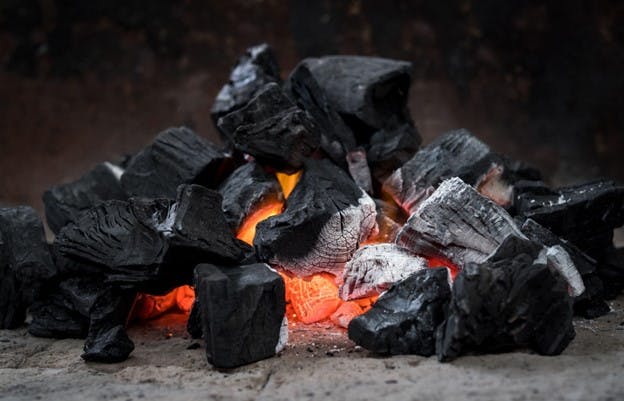July 2023
The Benefits of Activated Carbon Filters: Improve Your Water Quality
Carbon is an incredible substance. It powers our world as coal and oil, serves as the building block of life for all known organisms, and even forms diamonds when compressed. It also excels at filtering air and water for impurities.
We have high standards for our drinking water. Not only do we want it to be safe, but we also want it to be free of weird tastes and smells. One of the best technologies for the job is the activated carbon filter (sometimes called activated charcoal filter).
Activated carbon is the unsung hero of the water filtration world. It’s inexpensive, effective, and has an impressive list of jobs it does well. When used by itself (like in many popular water pitcher filters) it may not filter everything out that you care about, but when used intelligently in a multi-staged water filtration system, it's hard to beat the benefits of activated carbon filters.
So, let’s take a deep dive into the world of activated carbon. We’ll show you how activated carbon filters work and why this simple technology is a must-have component in your home filter. We think you’ll be surprised by just how interesting it all really is.
What Is Activated Carbon?
Activated carbon is carbon that is specially treated to have a large surface area. The more surface area carbon has, the more it can adsorb — and it has a lot of surface area. One single gram of the stuff has 500 square meters or more of surface area because it's so porous. That’s more than an NBA basketball court’s worth of surface area in something that would fit in a thimble. And in some cases it can get up to over 4,200 square meters per gram.
What Are Activated Carbon Filters?
Activated carbon filters are water filters (or air filters) that contain activated carbon media. Activated carbon is created by heating a carbon rich material like wood, bituminous coal, or coconut shells in the presence of an extremely high heat without oxygen. Once cooked, it’s exposed to argon or nitrogen and then cooked a second time in an oxygenated environment at even higher temperatures.
The result of this process is a highly porous, extremely adsorbent material that excels at removing a wide range of contaminants from water. When water flows through an activated carbon filter, the contaminants are attracted to, and trapped within, the carbon's vast network of pores, effectively removing them from the water.
What Are the Types of Activated Carbon Filters?
There are two major types of activated carbon used in water filters: granular activated carbon (GAC) and carbon block.
GAC filters consist of loose granules of activated carbon. These filters allow water to flow through the granules, with the carbon adsorbing impurities as it passes. GAC filters are popular due to their low cost and ease of use.
Carbon block filters, on the other hand, are made from finely ground activated carbon that is compressed back into a solid block. This process creates a more uniform structure, which has several advantages over GAC filters. Carbon block filters have increased density and smaller pore size, allowing for more extended contact between the water and the activated carbon.
This enhances the adsorption process, making carbon block filters more effective at removing a wider range of contaminants. Also, carbon block filters are less prone to channeling. Channeling is when water forms a groove to flow through that doesn’t contact the carbon media, letting more contaminants slip through.
Both types of activated carbon filters have their merits, but carbon block filters are generally considered better due to their increased performance and effectiveness in removing contaminants from water.
What Is Impregnated Activated Carbon?
Impregnated activated carbon is activated carbon with other substances infused into it. While activated carbon is very good at removing some contaminants, there are many it doesn’t work so well with. By infusing it with other substances, you can get the benefits of activated carbon filters with new properties that target specific contaminants. For instance, impregnating activated carbon with iron makes it more effective at removing nitrates.
What Is Catalytic Carbon?
Catalytic carbon is activated carbon with an altered surface structure that acts as a catalyst for certain chemical reactions. This makes catalytic carbon more effective at removing and adsorbing more complex molecules like hydrogen sulfide (think that rotten egg smell in well water) and chloramines, which are harder to break down than chlorine.
That added protection is why we use catalytic carbon in our HomeWater UPSTREAM 4-Stage Whole Home Water Filter. It makes them an especially good choice for homes with private wells or homes that receive chloraminated water from public utilities. Catalytic carbon also shines when it comes to ridding your water of disinfection byproducts, which are very common in water today.
What’s the Difference Between Activated Carbon and Activated Charcoal?
It can be a little confusing to keep up with all the types of activated carbon. Activated carbon and activated charcoal are two words for the exact same thing. Just don’t use your grill charcoal for water filtering. Those things aren’tactivated and they are full of additives.
What Will Activated Carbon Remove?
Activated carbon is very effective at removing many different types of contaminants from the air and water. Activated carbon water filter systems improve water quality by removing many different pollutants across a pretty wide spectrum.
These include:
- Chlorine and chloramine disinfectants
- Pesticides
- Volatile organic compounds (VOCs)
- Organic chemicals
- Some disinfection byproducts
- Some heavy metals like nickel
- Many contaminants that cause unpleasant odors and bad tastes
Our EZChange 2-Stage Under Counter Water Filter goes a step further by using two activated carbon blocks to remove even more. Our 2-stage filter also removes lead, mercury, cysts, and other contaminants rival carbon filters struggle with.
What Does Activated Carbon Not Remove?
While activated carbon filters work to remove a lot of contaminants, they don’t come close to removing everything by themselves. That’s why many people are turning away from the popular water pitcher filters that only use activated carbon in favor of larger multi-stage water filter systems for the whole house. Multistage systems can take advantage of the benefits of activated carbon filters while using other filtration methods to cover any shortfalls.
Activated carbon does not remove:
- Microbial contaminants like bacteria and viruses
- Nitrates and nitrites
- Hard water minerals like calcium and magnesium
- Hydrogen sulfide (that rotten egg smell)
- Fluoride
- Many other compounds
While activated carbon will remove small amounts of some of these, it’s not as effective as other filtration types like reverse osmosis systems for microbials and fluoride or water softeners for calcium and magnesium.
Do Activated Carbon Filters Work Well on Their Own?
There are lots of benefits of activated carbon filtersand you’ll always increase the quality of your tap water by using them. By themselves though, they might let a lot slip through the cracks. So, if all you have at your disposal is a single-stageactivated carbon filter, you should definitely use it. But when you start using a well-designed, multi-stage filtration process that incorporates activated carbon, you’lllikely notice an immediate difference in your water quality.
How Activated Carbon Fits into Multi-Stage Filtration Systems
In multi-stage water filtration systems, activated carbon filters are usually combined with other types of filters for more complete water purification. These additional filters could include sediment filters, ion exchange resins, or reverse osmosis membranes.
Each filter stage targets specific contaminants when they need to be targeted. For instance, activated carbon may filter out chlorine before it gets to the reverse osmosis membrane. This keeps the chlorine from damaging the membrane which extends the life and effectiveness of the whole system.
The activated carbon filter plays a crucial role in removing chlorine, VOCs, and other impurities that affect taste and odor. The combination of filters, the order they’re placed in, and the amounts of different media used at each step determines the effectiveness of your system.
What Are the Benefits of Activated Carbon Filters?
There are so many benefits of activated carbon filters. Here’s some of the best features of these filters:
- Natural: Activated carbon uses adsorption instead of chemicals to remove contaminants from your water. Not only does it not use chemicals, but it removes water treatment chemicals like chlorine. If you have well water that you treat with chlorine, an activated carbon filter will help you remove it once it has done its job.
- Taste-improving: Activated carbon filters are effective at removing compounds that create bad tastes and odors from tap water, resulting in better-tasting water.
- Versatile: Removes or reduces a wide variety of different impurities in your tap water. While not perfect, activated carbon will certainly improve your water quality in many ways.
- Inexpensive and abundant: Activated carbon is widely available and easy to replace. When a filter’s lifespan is up, you just go get a new one.
Get Cleaner, Better-Tasting Water
Activated carbon filters work quietly in the background to ensure that every drop of water that runs through them is cleaner, fresher, and lower in many contaminants. They are abundant and affordable.
By themselves, the benefits of activated carbon filters are obvious the moment you take the first sip. However, when added into a multi-stage filtration system, activated carbon becomes even more impressive. Activated carbon can significantly increase the quality of water coming from a multi-stage filter without adding much to the cost or maintenance.
The HomeWater EZChange 2-Stage Under Counter Under Sink Water Filter is a perfect example of this. This affordable point-of-use filtration system removes or reduces chlorine, lead, rust, dirt, and particulate matter. It is made in America, installs under any sink, is easy to maintain, and will dramatically improve the taste and odor of your tap water.
If you want even more from your water, the HomeWater 4-Stage Reverse Osmosis Under Counter Water Filter combines a pre- and post-carbon filter with a sediment filter and a reverse osmosis system for the ultimate in water protection. The U.S.-made 4-stage system reduces sediment, dirt, chlorine, dissolved inorganics, barium, cadmium, fluoride, hexavalent and trivalent, chromium, lead, copper, radium 226/228, selenium, nitrates, nitrites, and more.
Try any one of our under-sink water filtration systems with activated carbon today and see the difference HomeWater can make.


